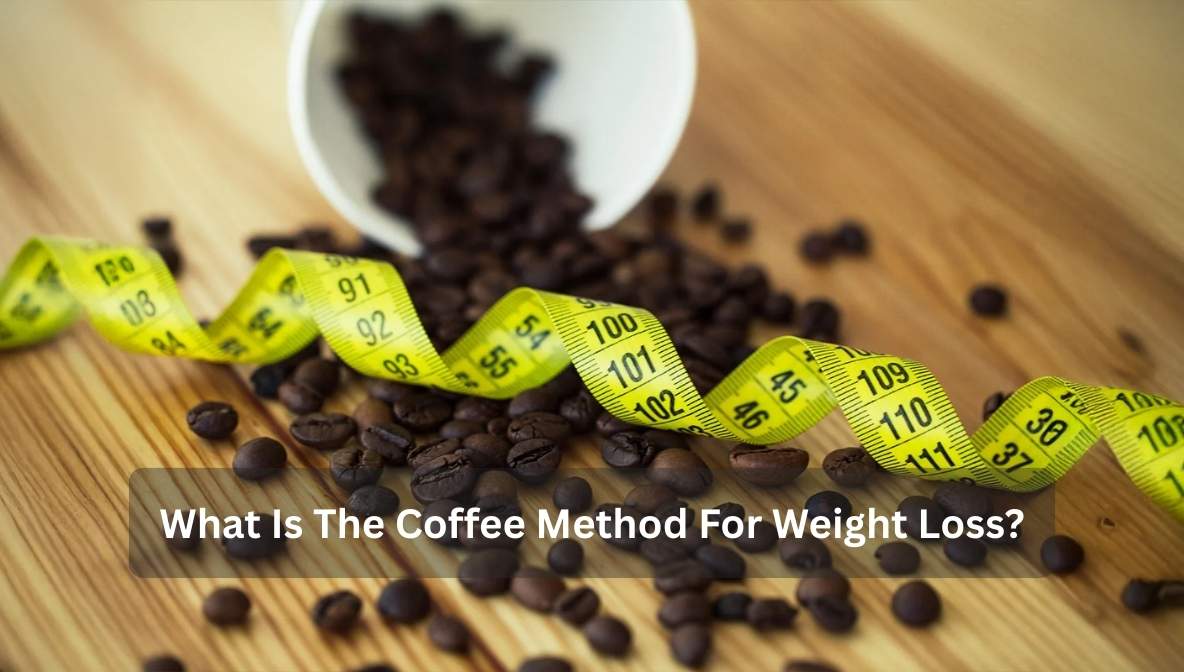Losing and gaining weight during perimenopause and menopause might become a nightmarish experience. Most women can tell that even with the ancient advice, to consume less and exercise more, the weight just does not want to go. That’s where the Galveston Diet comes in. Created by Dr. Mary Claire Haver, a board-certified OB-GYN, this diet specifically targets the hormonal shifts and inflammation linked to midlife weight gain. It is so much more than a normal diet; it is a combination of intermittent fasting, anti-inflammatory nutrients, and a smart macronutrient ratio to allow women to find their power and control with their health and bodies during this critical period.
The Galveston Diet not only aims for weight loss but also supports overall wellness, addressing issues like mood swings, fatigue, and metabolic changes commonly experienced in menopause. It is potentially attractive as an extended remedy because it is committed to sustainable lifestyles and whole foods.
Key Takeaways:
- The Galveston Diet targets menopausal weight gain by combining intermittent fasting with anti-inflammatory nutrition.
- It includes a high-fat, low-carb diet known as Fuel Refocus; it helps to get the body to burn fat more effectively.
- In contrast to fad diets, it is long-term-oriented and concentrates on hormonal balance and such other aspects of lifestyle as stress management and intestinal health.
What Is the Galveston Diet and How Does It Work?
The Galveston Diet is a nutritional program designed primarily for women experiencing perimenopause and menopause. It also appreciates that this period of life, with the hormonal changes, has an impact on the metabolism, appetite, and the storage of fat, leading to an increase in the difficulty to lose weight. This diet will not go against the changing body needs; it is meant to operate with the body needs.
Core Components
Intermittent Fasting (16/8 routine):
- You consume all your daily calories in an 8-hour window, after which you will fast for the next 16 hours. It has been noted that the practice helps in the reduction of calories consumed, increasing insulin resistance, and decreasing inflammation.
Anti-Inflammatory Foods:
- Menopause also comes with inflammation that enhances gain of weight gain and other health ailments. It focuses on whole foods that contain plenty of antioxidants and omega-3 fatty acids, including fruits, vegetables, fatty fish, nuts, seeds, and fermented foods, and removes processed food and any added sugar.
Fuel Refocus- High Fat Low Carb:
- Its macronutrient proportion is first aimed at a high proportion of healthy fats, about 70 percent of calories, 20 percent of protein, and 10 percent of carbs, which is relatively similar to a ketogenic diet. This transition causes the body to use fat as energy instead of carbs-based glucose. Carbohydrate consumption was reintroduced gradually after 6 weeks to enhance its ability to be followed long-term and maintained.
Expert Insight
According to Dr. Mary Claire Haver, most of the conventional weight loss recommendations do not work on menopausal women since they do not pay attention to the hormonal and inflammatory changes. These changes are dealt with through my diet consisting of real food and sustainable patterns.”
Foods to Eat and Avoid on the Galveston Diet: What Does a Day Look Like?
A key to the Galveston Diet is focusing on nutrient-dense, anti-inflammatory foods that support weight loss and hormonal health.
Recommended Foods
- Healthy Fats: Avocado, olive oil, nuts, seeds, fatty fish (salmon, mackerel).
- Lean Proteins: Tofu, legumes, and chicken, as well as turkey
- Fruits and vegetables: Also those that are colorful and with antioxidants (strange greens, berries, broccoli)
- Whole grains: Amount is small, such as quinoa and brown rice
- Fermented foods: Miso, kimchi, tempeh to boost the gut health
Foods not to Eat
- Foods that come in processed or packaged form, which include refined sugars and additives
- Other refined carbohydrates, white rice and white bread
- Soft drinks and confectionaries
- Excessive alcohol
Sample Day on the Galveston Diet
- Breakfast: an omelet made of spinach, mushrooms cooked in olive oil, with berries as a side dish
- Lunch: Grilled salmon cooked with quinoa and a salad made of mixed greens, as well as avocado
- Snack: Walnut fingers and a cup of green tea without sugar
- Dinner: roasted chicken breast with steamed broccoli and some flaxseed on it
Tip: It is also essential to set time aside to make sure you have time to meal plan and prepare correctly to diminish the temptation of processed foods.
Galveston Diet vs. Traditional Keto: A Comparison Table
| Feature | Galveston Diet | Traditional Keto Diet |
|---|---|---|
| Macronutrient Ratio | Starts ~70% fat, 20% protein, 10% carbs; adjusts for maintenance | ~70-80% fat, 10-20% protein, 5-10% carbs |
| Focus | Menopausal weight loss, inflammation reduction | General ketosis and fat burning |
| Intermittent Fasting | Key component (16/8 fasting) | Optional |
| Food Variety | Includes more anti-inflammatory, whole foods | More restrictive on carbs |
| Lifestyle Elements | Includes gut health, stress management, and exercise guidance | Focused mainly on diet |
| Target Audience | Primarily middle-aged women | Broadly, many age groups |
Table 1 Caption: Comparison of the Galveston Diet and traditional ketogenic diet, highlighting key differences and target populations.
ALT text: Table comparing macronutrient ratio, focus, fasting, and audience between the Galveston diet and the keto diet.
This overview shows the Galveston Diet’s tailored approach to menopausal challenges, offering a more holistic plan than standard keto.
Real-Life Success Story: How the Galveston Diet Transformed Susan’s Midlife Health
This is the case of a 52-year-old lady, Susan, who experienced stagnant weight gain and low energy during menopause, even after numerous diets and exercise programs. After adopting the Galveston Diet, she noticed a significant change within two weeks. She lost six pounds, reduced bloating, and felt more energized—all in just 14 days. After a period of more than six months, Susan lost more than 60 pounds, had less women problems, and was able to maintain a healthier heart condition. Not only that, she lost weight, she feels better: both inside and out, she concludes.
The major Contributing Factors to the success of Susan
- Regular intermittent fasting succeeded in alleviating craving and controlled appetite.
- Whole foods with an anti-inflammatory effect, aided digestion, and adequate balance of moods.
- A sustainable diet was as a result of the gradual modification of macronutrients.
- Included the techniques of stress management, like meditation.
Lifestyle and Wellness: Supporting the Galveston Diet for Lasting Health
The Galveston Diet extends beyond food to emphasize overall wellness, helping women manage menopause holistically.
Managing Stress
Women who experience chronic stress tend to be less able to lose weight because it makes them more inflammatory and it affects their hormones. Diet effectiveness and hormone balance can be promoted by joining mindfulness, yoga, or journaling.
Gut Health
Fermented foods such as miso and kimchi can increase the diversity of the gut microbiome. Regulation of weight and inflammation are achieved with the help of a healthy gut.
Movement and exercise
The diet does not provide the rigorous workout plan, but Dr. Haver suggests that one should do a moderate exercise on the regular basis, i.e,. walk or train strength.
Reminder: Long-term success on the Galveston Diet requires combining dietary changes with lifestyle habits for holistic menopausal wellness.
Weight Control and Change in Macronutrients (Table 2 Included)
After initial fat-burning phases, the Galveston Diet gradually transitions to a more balanced macronutrient intake for maintenance and flexibility.
| Phase | Fat (%) | Protein (%) | Carbohydrates (%) | Description |
|---|---|---|---|---|
| Initial Weight Loss | 70 | 20 | 10 | High fat, low carb promotes fat burning |
| Transition Phase (~6 weeks) | 50 | 20 | 30 | Increased carbs for sustainability |
| Maintenance Phase | 40 | 20 | 40 | Balanced diet for long-term health |
Table 2 Caption: Macronutrient phase progression in the Galveston Diet from weight loss through maintenance.
ALT text: Table showing fat, protein, and carbohydrate percentages in each phase of the Galveston diet.
Conclusion
The Galveston Diet offers a targeted and scientifically grounded approach to the unique weight management challenges faced during perimenopause and menopause. It synchronizes intermittent fasting, an anti-inflammation diet, and a personalized proportion of macronutrients, which meet the hormonal and metabolic shifts that tend to complicate weight loss at this age stage.
Importantly, this diet can lead to sustainable practices and involves lifestyle approaches to that process, like stress management and beneficial probiotics, which also contribute to long-term success. For women who have struggled with the conventional “eat less, move more” advice, the Galveston Diet provides a refreshing and empowering alternative.
Managing weight during menopause? The Galveston Diet could help. For more natural tips, check out Lemon Balm for Weight Loss: Natural Tips to Burn Fat Fast. Always consult your doctor before starting a new plan.
FAQs
Q1: What is the primary goal of the Galveston Diet?
A: Its principal ambition is to counter menopausal weight gain through emphasis on intermittent fasting, anti-inflammatory nutrients, and switching the body to fat as a source of food.
Q2: Can men follow the Galveston Diet?
A: The concepts of anti-inflammatory dieting and intermittent fasting that the diet is based on can help any person; however, men need to adjust the diet to their needs.
Q 3: Is this diet safe using intermittent fasting?
A: Generally, for most healthy adults16/8 intermittent fasting is safe to do, but if you have any restricted condition like diabetes, then I advise my clients to go and speak to a retirement doctor first.
Q4: What is the estimated time of results?
A: It is reported that many lose weight after a few weeks, but the outcome increases over time, and it depends on consistency and lifestyle.
Q5: Does the Galveston Diet require counting calories?
A: No, it does not center on calorie counting; it means the quality of food, its timing, and the balance between different macronutrients.



